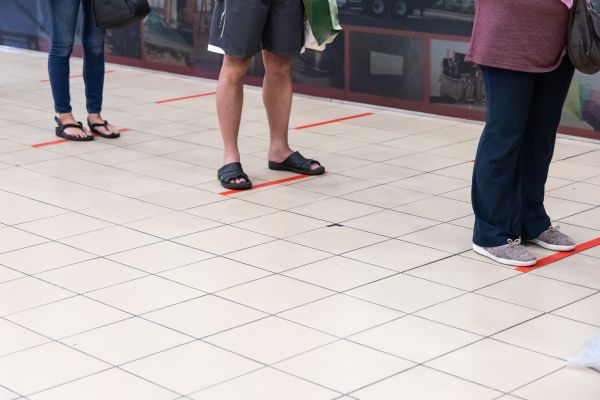A survey of North Americans and Europeans examines motivations and barriers for social distancing finds men and young people relatively less likely to comply.
Social distancing measures (e.g., avoiding travel, limiting physical contact with people outside of one’s household, and maintaining a 1 or 2-metre distance between self and others when in public, depending on the country) are the primary strategies used to prevent transmission of the SARS-Cov-2 virus that causes COVID-19. Given that there is no effective treatment or vaccine for COVID-19, it is important to identify barriers and facilitators to adherence to social distancing to inform ongoing and future public health campaigns.
This cross-sectional study was conducted online with a convenience sample of English-speaking adults. The survey was administered over the course of three weeks (March 30 –April 16, 2020) when social distancing measures were well-enforced in North America and Europe. Participants were asked to complete measures assessing socio-demographic characteristics, psychological constructs, including motivations to engage in social distancing, prosocial attitudes, distress, and social distancing behaviors. Descriptive (mean, standard deviation, percentage) and inferential statistics (logistic regression) were used to describes endorsement rates for various motivations, rates of adherence to social distancing recommendations, and predictors of adherence.
Data were collected from 2013 adults living primarily in North America and Europe. Most frequently endorsed motivations to engage in social distancing (or facilitators) included “I want to protect others” (86%), “I want to protect myself” (84%), and I feel a sense of responsibility to protect our community” (84%). Most frequently endorsed motivations against social distancing (or barriers) included “There are many people walking on the streets in my area” (31%), “I have friends or family who need me to run errands for them” (25%), “I don’t trust the messages my government provides about the pandemic” (13%), and “I feel stressed when I am alone or in isolation” (13%). Adherence to social distancing recommendations ranged from 45% for “working from home or remotely” to 90% for “avoiding crowded places/non-essential travel”, with men and younger individuals (18–24 years) showing lower adherence compared to women and older individuals.
This study found that adherence to social distancing recommendations vary depending on the behaviour, with none of the surveyed behaviors showing perfect adherence. Strongest facilitators included wanting to protect the self, feeling a responsibility to protect the community, and being able to work/study remotely; strongest barriers included having friends or family who needed help with running errands and socializing in order to avoid feeling lonely. Future interventions to improve adherence to social distancing measures should couple individual-level strategies targeting key barriers to social distancing identified herein, with effective institutional measures and public health interventions. Public health campaigns should continue to highlight compassionate attitudes towards social distancing.
Source: PLOS

251422 386119This Los angeles Weight Loss diet happens to be an low and flexible going on a diet application meant for typically trying to drop the weight as effectively within the have a considerably healthier lifetime. shed weight 154332